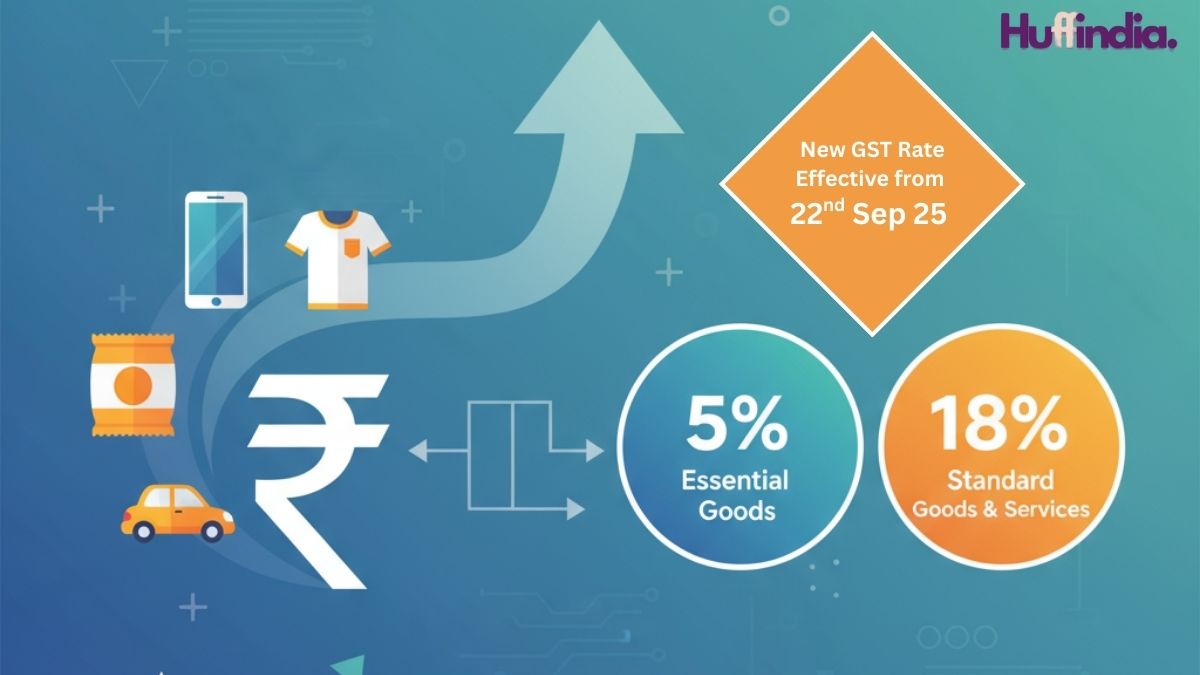Major Overhaul of India’s Indirect Tax System
In a landmark move, the Indian government has overhauled the Goods and Services Tax (GST) regime with the adoption of a simplified two-slab tax structure, effective from September 22, 2025. The reform, approved at the 56th GST Council meeting, replaces the multiple GST rates (5%, 12%, 18%, 28%) with just two main slabs: 5% for essentials and 18% for most goods and services. Meanwhile, a higher 40% rate will now apply to luxury and “sin” goods, such as tobacco, aerated drinks, and high-end vehicles.
The reform aims to make taxation more transparent, reduce household expenses, spur consumer demand, and boost business growth. The decision follows years of industry feedback about compliance complexity and the need for broader tax justice for ordinary citizens.
Impact on Everyday Products
Essentials Cheaper: A key highlight is the reduction in tax rates on commonly used items. Everyday essentials like soaps, shampoos, toothpaste, biscuits, and household staples including many packaged foods will now attract just 5% GST, down from the previous 12% or 18%. Milk, paneer, nuts, chocolates, and biscuits have also seen steeper rate drops, providing direct relief to urban and rural families. Medicines, thermometers, and many diagnostic kits now fall under either 0% or 5%, enhancing healthcare affordability.
Home Construction and Durable Goods: GST on key construction materials, cement, and smaller cars has been rationalized to 18% from higher previous rates, potentially reducing the cost of home projects and car ownership for millions of Indians. White goods such as ACs, dishwashers, and televisions also see lower tax in specific categories—intended to boost India’s manufacturing and job market.
Education and Childcare: School essentials such as erasers, pencils, and exercise books now attract no GST, while items like geometry boxes and various school containers have been moved to the 5% bracket. These changes are projected to ease the financial burden on families and support education accessibility.
Agriculture and MSMEs: The cut in GST on agricultural machinery and bio-pesticides is expected to lower farming costs, benefiting small and marginal farmers. MSMEs gain due to lessened compliance and lower input costs, enhancing their competitiveness and job creation potential.
Targeted Increases: Luxury and Sin Goods
To balance the revenue equation, the council has earmarked a 40% GST rate exclusively for luxury items and goods deemed socially harmful, such as tobacco products, aerated and caffeinated beverages, high-end cars, yachts, and private jets. This shift is meant to ensure fairness, discouraging the consumption of such goods while broadening the tax base.
Simplified Compliance and Business Benefits
Alongside rate changes, compliance procedures have been digitized, with streamlined registration, return filing, and refunds. Startups and small businesses—long burdened by voluminous paperwork—are projected to benefit the most from reduced red tape and quicker turnaround times for input tax credits.
Sector-wise Breakdown
Consumer and Industry Reactions
The reform has been cautiously welcomed by industry leaders and consumer organizations. Lower taxes on household goods and essential services are expected to increase disposable income and stimulate consumption. Farmers and MSMEs anticipate savings and quicker refunds, encouraging investments and expansion.
However, manufacturers, retailers, and importers must rapidly update MRPs for inventory as all price tags must reflect the inclusive new GST rates—a significant logistical challenge with a deadline of December 2025 for transition.
Economic Implications
According to fiscal experts, GST rate reductions carry a higher “fiscal multiplier” than other forms of tax cuts, meaning they are more effective in jumpstarting consumer demand and overall economic recovery post-pandemic. Broader compliance and a simpler tax code are projected to expand the tax base, stabilizing government revenue while making the system fairer.
Conclusion
The GST Reform 2025 is monumental for common consumers, businesses, manufacturers, and the state exchequer. By making essentials affordable and streamlining the tax system, it is positioned to drive domestic demand, improve compliance, and deepen economic growth across sectors—a true “Diwali gift” for the nation.

























